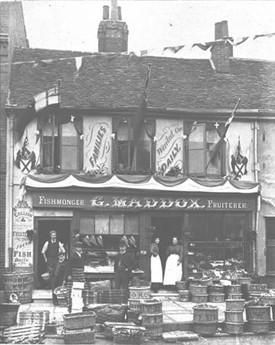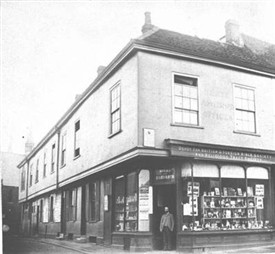Retail trade in nineteenth century St Albans


Between 1801 and 1901 the population of St. Albans grew from 3,872 to 16,181. In the middle of the century a railway line was built between Watford and St. Albans into the Abbey station at the bottom of Holywell Hill in 1868. St. Albans City Station came into being when passenger and goods trains started in 1868 between London St. Pancras and Bedford. In 1883 trains began to run from St. Albans to Hatfield.
As the population grew so did the demand for retail goods and services. Details of these were listed in the various directories published which included: Pigot & Co., Kelly, the Hertfordshire Almanac and the St. Albans Almanac. The early listings were arranged by trades and services alphabetically e.g. bakers or saddlers or wheelwrights. Under each heading is given the surname, followed by the Christian name and the street where they were located.
It is hoped to add additional information from a variety of resources later. Here are some examples from the Pigot list of 1822.
Christopher-yard, Dagnall-lane, Fishpool-street: Hooper, Mrs. (ladies’ boarding academy)
George-st High-st: Brabant, Richard (attorney) Story, John Samuel (attorney)
Holywell-hill: Pigot, Isaac (attorney)
Market-place St. Peters-street: Boys (attorney) Crowther, Mrs. (ladies’ boarding academy) Nash, Mr. (gentlemen’s boarding academy) Raban. Mrs. J. (ladies’ boarding academy) Wells, Misses. (gentlemen’s boarding academy) White, Miss. (ladies’ boarding academy)
References
The Victoria History of the Counties of England: Hertfordshire. Table of Population, p238. ibid, pp 239-240




